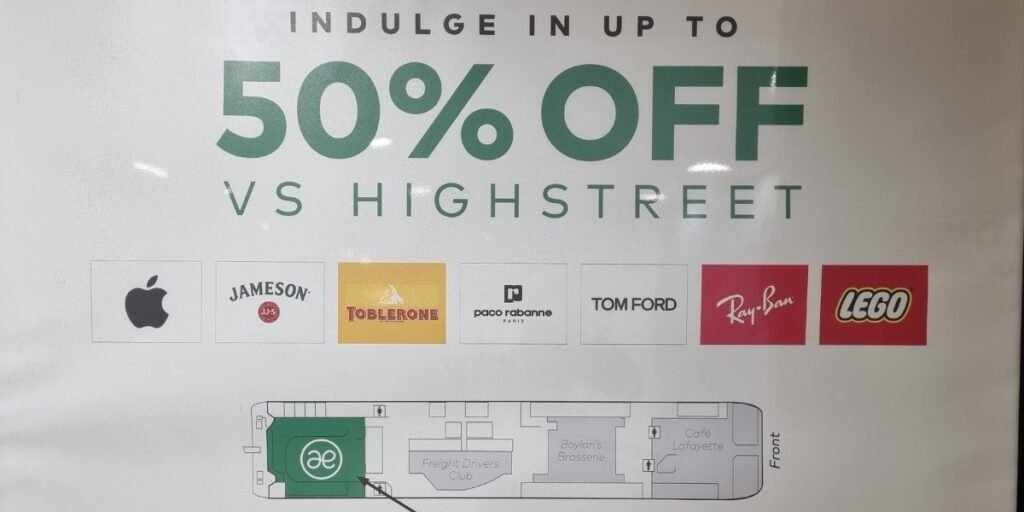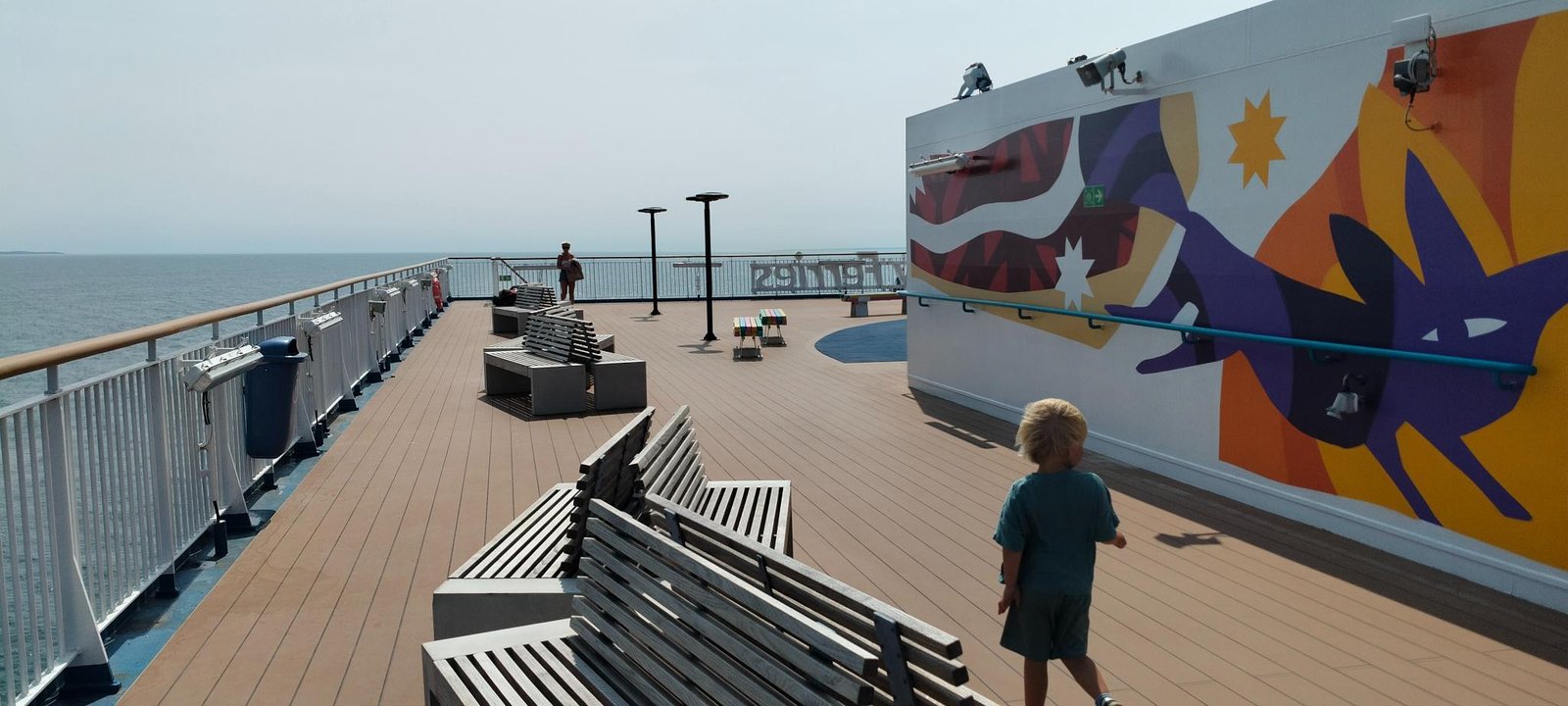Duty-Free Shopping on UK-EU Ferry Trips: Allowances (2025 Guide)

Ferries between the UK and the EU are sailing back into duty-free territory. Since Brexit, you can re-access duty-free shopping if you’re hopping over to France or the Netherlands by ferry. But to enjoy it without a headache at customs, you need to know the rules. That means knowing what you can bring from the UK into the EU, and what you can take home. Let’s get into it.
What Changed After Brexit?
Before Brexit, duty-free on ferries was basically gone if you were travelling within the EU. Now that the UK is outside the EU, it's back. Shops onboard ferries and at ports are selling alcohol, tobacco, perfume and more without VAT or excise duty. Sounds good. But these aren’t unlimited deals. There’s a line you can’t cross without having to declare what you bought and potentially pay up.
The UK and the EU both have duty-free allowances. These are personal limits on how much stuff you can bring without paying tax at the border. And no, you can’t combine allowances between passengers. Everyone has their own limit.
What You Can Bring from the 🇬🇧 UK to the 🇪🇺 EU
Here’s where it gets real. You’re travelling by ferry from the UK into France or the Netherlands, the EU, say from Dover to Calais or Newcastle to Amsterdam. You’re allowed to bring in the following without paying EU taxes:
Alcohol (for anyone 17 or over):
- Up to 4 litres of still wine
- 16 litres of beer
- Either 1 litre of spirits over 22 per cent, OR 2 litres of sparkling or fortified wine (like champagne or sherry)
You can split it too. Half a litre of whisky and 1 litre of port? That works.
Tobacco (again, for 17 or older):
- 200 cigarettes
- Or 100 cigarillos
- Or 50 cigars
- Or 250 grams of rolling tobacco
Mixing and matching are allowed as long as they add up fairly. But remember that a few countries, like Belgium or Germany (but you can't ferry to Germany), have lower limits on sea routes. If you’re ferrying into France or the Netherlands, you’ll likely stick with the list above.
Other Goods:
- Anything else, up to a value of £370 per person if arriving by ferry
Think clothes, gadgets, souvenirs, perfume, and snacks. If you’re travelling with kids under 15, their allowance for non-alcoholic and non-tobacco goods drops to around £130.
If you look at the top Ferry companies sailing from the UK to EU, here you

Onboard Shopping: UK to EU
Shops on board sell discounted drinks, wine, cigarettes and more. Just don't go over the maximum allowance.
Most ferries let you pre-order your duty-free stash and collect it on board. Just keep it sealed until you arrive. Here, for instance, you can do that with P&O Ferries, which they call a reserve and collect service. At DFDS, this service is also called a Reverse and Collect service. However, this service seems a little bit better, as you can shop internally, and with P&O, you get redirected to a third-party website.
We also looked up the differences of a few random products, and the duty-free discounts are enormous:

What You Can Bring from the 🇪🇺 EU Back to the 🇬🇧 UK
Now, for the return trip. Let’s say you stocked up in a Calais hypermarket (Google, for instance, for the Calais Wine Superstore). What can you bring home?
Alcohol:
- 42 litres of beer
- 18 litres of still wine
- 4 litres of spirits OR 9 litres of sparkling wine or fortified wine (choose one category)
You can split within the category, like 2 litres of gin and 4.5 litres of port. Just don’t try to double up on both.
Tobacco:
- 200 cigarettes
- Or 100 cigarillos
- Or 50 cigars
- Or 250 grams of rolling tobacco
- Or 200 sticks for e-cigarette devices
Other Goods:
- Up to £390 worth of other goods (about €450)
If you’re over that, you’ll need to declare it. If you bought a single item over £390, same deal. The UK will charge you duty and VAT.
A small catch:
If the stuff you bought was made or grown in the EU, you might not need to pay customs tariffs on anything over the allowance. You’ll still owe VAT and excise duty, though. And you need proof of origin. Ask in these hypermarkets about this proof of origin.
🚨 Food Rules
Here’s where it gets strict. Meat and dairy? Don’t bring it. The EU prohibits meat, milk, cheese or similar products from the UK. Your sandwich might be seized at the border. Seriously.
A few small exceptions exist, like baby formula or certain pet foods. But your average cheese haul? That’s a no.
Fish and seafood? Limited amounts are usually allowed. Up to 20kg in most cases. Same for some fruits or vegetables, but a lot of that needs a plant certificate. When in doubt, don’t bring it.
Returning to the UK: More on Shopping and Declarations
Shops at EU ports like Calais often have duty-free deals for UK travellers. It’s common to stock up before heading back. Just make sure you’re within your limits.
If you’ve gone over, you can declare online with UK customs ahead of time or go through the red channel when you dock. Declare it or risk losing it.
If you’re under 17, forget about bringing alcohol or cigarettes. No duty-free allowance applies.
What People Buy at Duty-Free (UK to EU)
Wine is a favourite. You can often find bundles or multi-buy offers that fit within your limit of four litres per person.
Beer is another one to look out for, especially if you’re heading out with friends or camping. Six-packs and crates go fast.
Spirits like gin, whisky, and vodka usually sell well. The limit is one litre per adult, so choose wisely.
Tobacco and rolling tobacco are still in demand. Many travellers stock up for personal use or gifts, sticking to the 200-cigarette limit.
Fragrances and aftershaves are popular too. These are often much cheaper than buying at a regular shop in the UK. The difference is not very high though.
Final tips for ferry duty-free
- Know your limits before you buy
- Keep your receipts in case someone asks!
- Don’t mix everyone’s allowance into one suitcase
- Declare anything over the limit to avoid penalties
That’s it: all UK-EU allowances for ferries
| Item | UK to EU allowance | EU to UK allowance |
|---|---|---|
| Beer | Up to 16 litres | Up to 42 litres |
| Still Wine | Up to 4 litres | Up to 18 litres |
| Spirits (>22% ABV) | Up to 1 litre | Up to 4 litres |
| Fortified/Sparkling Wine | Up to 2 litres | Up to 9 litres |
| Cigarettes | Up to 200 | Up to 200 |
| Rolling Tobacco | Up to 250g | Up to 250g |
| Other Goods (by value) | Up to £370 per person (EU limit) | Up to £390 per person (UK limit) |
There is much to gain here; if you spend some time on this, you can profit from your Calais-Dover ferry!
Official info is always worth a look, too. Check:
Good luck with your duty free shopping!
The editorial team at FerryGoGo writes travel guides and creates route ideas for ferry travel, along with everything else that might be of interest to travelers and tourists.





